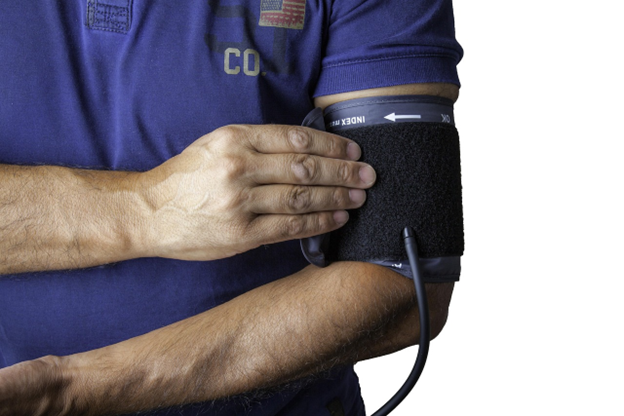High blood pressure is often called the ‘silent killer’. This is because it comes with no noticeable symptoms. Yet, high BP can indicate a higher risk of stroke and heart disease. Medication is the most common way to manage high blood pressure. However, some dietary changes can also have a powerful impact on blood pressure levels. In this blog, we will focus on the relationship between omega-3 and blood pressure and how it can help in managing high BP.
Understanding Omega-3 Fatty Acids
Fatty acids are mainly of two main types: saturated fats and unsaturated fats. Unsaturated fats come in two varieties, polyunsaturated fat and monounsaturated fat. While saturated fats are bad for heart health, unsaturated fats can be beneficial if consumed from the right sources in the right quantities.
Omega-3 fatty acids are a specific type of unsaturated fat that the body cannot produce on its own. Omega-3 and Omega-6 are Essential Fatty Acids (EFA), meaning that they are crucial for the body’s functioning. They have numerous positive effects on the body, including reducing inflammation, lowering bad cholesterol levels, and reducing blood pressure.
The Connection Between Omega-3 and Blood Pressure
Studies have found that Omega-3 and blood pressure are closely related. According to experts, two specific types of Omega-3 fatty acids, namely EPA and DHA, are especially effective in keeping blood pressure in check. These fatty acids, found mainly in fatty fish and fish oil supplements, have been shown to reduce blood pressure almost as effectively as medications. They help in relaxing blood vessels, improving blood flow, and reducing blood pressure. They also prevent the build-up of fat deposits in the arteries.
Benefits of Omega-3 for People with Hypertension
Researchers have found that people who consume Omega-3 fatty acids regularly experienced an average BP decrease of 4.51 mm Hg during heartbeats. In comparison, their BP fell by an average of 3.05 mm Hg during rest periods between heartbeats. Further, these fatty acids have also been shown to improve long-term heart health. Here is how the omega-3 blood pressure connection works;
- Omega-3 fatty acids help reduce inflammation in blood vessels, thereby reducing blood pressure.
- Omega-3s boost nitric oxide generation in the body. Nitric oxide widens the blood vessels, playing a key role in decreased blood pressure.
- Omega-3s keep the heartbeat smooth and uniform, allowing blood to flow evenly throughout the body.
How to Incorporate Omega-3 into Your Diet
In addition to supplements, one can include Omega 3 fatty acids by adding any of the following in their diet:
- Soyabean
They are a major source of vegetable protein and nutrients such as vitamin K, magnesium, and potassium. Soybean is also a rich source of omega-3 fatty acids, making them a major part of the DASH diet (Dietary Approaches to Stop Hypertension).
- Walnuts
Walnuts contain large amounts of nutrients like copper, manganese, and vitamin E. They are also loaded with fibre. Being incredibly nutritious, walnuts play a key role in managing hypertension.
- Flax seeds
Being one of the richest whole food sources, flaxseed oil is also used as an omega-3 supplement. The seeds have a great omega-6 to omega-3 ratio compared to most other oily plant seeds.
- Chia seeds
A preferred breakfast option for many, chia seeds are full of essential nutrients. A standard 28 g serving of chia seeds contains 5 g of protein, including eight essential amino acids.
- Cod liver oil
Oil extracted from the livers of cod fish is the most commonly used source of Omega-3, especially in supplements. It is high in omega-3 fatty acids and loaded with vitamins D and A.
- Salmon
People who regularly consume salmon complain less of conditions like dementia and depression. Being one of the best sources for Omega-3 fatty acids, salmon contains large amounts of D and B vitamins.
Precautions When Using Omega-3 for Blood Pressure
Though there are multiple benefits of omega-3 and blood pressure, including reducing the risk of diabetes, cardiovascular disease, rheumatoid arthritis, and asthma, the following precautions need to be followed:
- Fish oil consumption must be limited to 3g daily. Anything more than this can lead to heartburn, loose stools, and even nosebleeds.
- Make sure you source fish like salmon from trusted vendors. There is always a risk that fish can be contaminated with mercury and other chemicals.
- Pregnant women should limit fish oil to 2-3 weekly servings.
- Excessive consumption of omega-3 fatty acids can increase blood sugar levels. This can, in turn, weaken the body’s immune system.
- Omega-3 supplements can react with other medications, specifically blood pressure medications. This can include anything from anti-blood clotting drugs to antiplatelet drugs. Such reactions can cause complications like sudden lowering of BP.
The relationship between omega-3 and blood pressure is a deep-rooted and complicated one. It is best to consult your doctor or pharmacist before integrating omega-3-rich foods into your diet or starting on supplements. In addition, avoid taking them if you have chronic conditions or are already on blood-thinning drugs.
Disclaimer
The information contained in this article is to educate, spread awareness in relation to hypertension and other diseases to the public at large. The contents of this article are created and developed by BPinControl.in through its authors, which has necessary, authorisations, license, approvals, permits etc to allow usage of this articles on The Website. The views and opinions expressed in this article are views, opinions of the respective authors and are independently endorsed by doctors. Although great care has been taken in compiling and checking the information in this article, The Website shall not be responsible, or in any way liable for any errors, omissions or inaccuracies in this article whether arising from negligence or otherwise, or for any consequences arising therefrom. The content of this article is not a substitute for any medical advice. The Website shall not be held responsible or liable for any consequence arising out of reliance on the information provided in the article.




